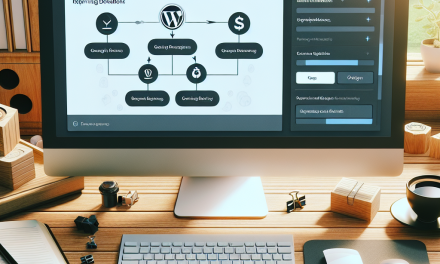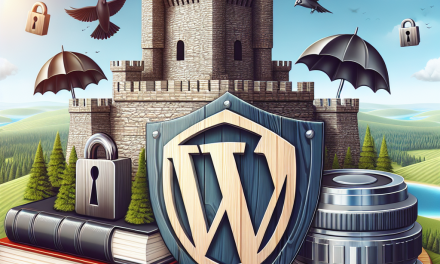In today’s digital landscape, website speed is crucial. A fast-loading site not only enhances user experience but also improves your search engine rankings. One of the leading culprits behind slow WordPress pages is image size. In this article, we’ll explore how to master image optimization for a quicker WordPress site.
Why Optimize Images?
Images are essential for a visually appealing website, but high-resolution images can significantly slow down page load times. When you optimize images, you reduce their file size without compromising quality. This leads to faster loading times, better performance, and improved SEO.
Best Practices for Image Optimization
Here are some effective strategies to optimize your images on a WordPress site:
1. Choose the Right File Format
Selecting the appropriate file format is crucial. The three main formats are:
- JPEG: Great for photographs; offers a good balance between compression and quality.
- PNG: Best for graphics with transparent backgrounds. It maintains higher quality but results in larger file sizes.
- WebP: An emerging format that provides superior compression while maintaining quality, making it ideal for the web.
2. Compress Your Images
Reducing image file sizes can drastically improve loading times. There are several tools and plugins available for WordPress, such as:
- Smush: Automatically compresses images as you upload them.
- EWWW Image Optimizer: Offers bulk optimization features.
- ShortPixel Image Optimizer: Provides lossy and lossless compression options.
For a detailed guide on using these plugins, refer to the WordPress documentation for installation and setup instructions.
3. Resize Images Appropriately
Uploading large images that exceed your display needs can slow down your site. Use image editing tools like Canva or Adobe Photoshop to resize images before uploading them to WordPress. Ideally, the image dimensions should match the dimensions displayed on your site.
4. Use Lazy Loading
Lazy loading delays the loading of images until they are needed, significantly reducing initial page load times. WordPress has built-in lazy loading features for images. You can also implement plugins like a3 Lazy Load for more control.
5. Utilize Content Delivery Networks (CDNs)
A CDN distributes your images across multiple servers around the world, allowing users to access them from the server closest to them. This can greatly enhance loading speed. Popular CDNs include:
- Cloudflare
- Amazon CloudFront
6. Consider Image Hosting Solutions
For an even faster experience, consider storing your images on specialized hosting services. WafaTech offers NextGen WordPress hosting that ensures fast access and reliability.
Testing Your Image Optimization
After optimizing your images, it’s important to test your website’s performance. Tools like Google PageSpeed Insights and GTmetrix can provide insights on how your site is performing and areas where further improvements can be made.
Conclusion
Mastering image optimization is a key component of enhancing your WordPress site’s performance. By following the practices discussed, you’ll create faster-loading pages that cater to your visitors’ needs while boosting your site’s SEO.
Ready to take your WordPress site to the next level? Explore WafaTech’s NextGen WordPress hosting for fast, reliable hosting solutions tailored to your needs. Optimized images are just the beginning!
For further reading on WordPress optimization, check out the official WordPress documentation for a wealth of resources and tools. Happy optimizing!





